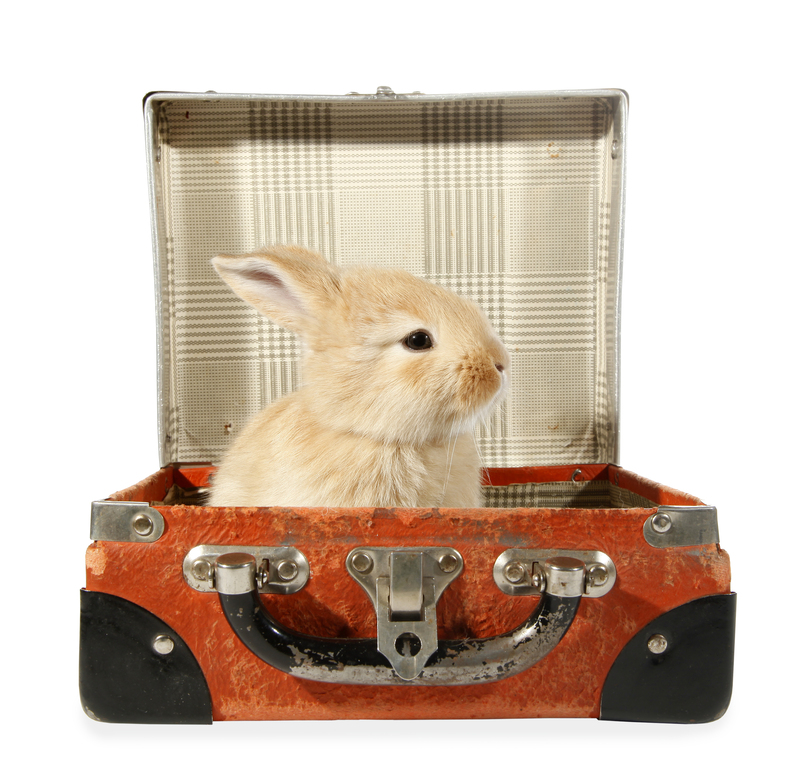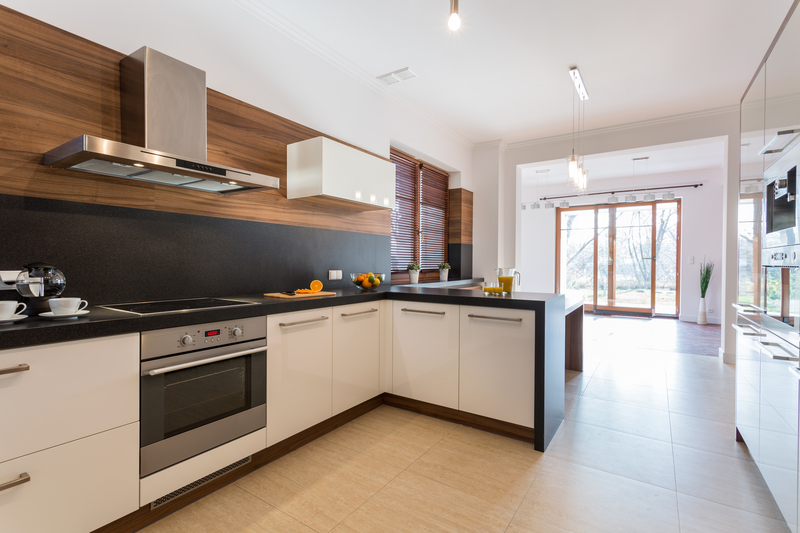The Symphony of Moving Your Piano: Trust the Professionals
Posted on 20/06/2025
The Symphony of Moving Your Piano: Trust the Professionals
Moving a piano isn't just another day at the office--it's a finely orchestrated symphony of precision, expertise, and care. Whether you own a cherished family upright or a magnificent grand, relocating such a valuable instrument requires more than brute strength. To protect your investment and ensure every note remains in tune, trusting professional piano movers is the best decision you can make. In this comprehensive guide, explore why entrusting your piano to the experts orchestrates a harmonious move, how the process works, and tips to help you prepare for this unique transition.
Why Moving a Piano Demands Specialized Expertise
Unlike a standard piece of furniture, a piano is a complex and delicate masterpiece. Each part, from the intricate strings to the polished wood, plays a vital role in producing melodious tunes. Here's why the task of moving such an instrument requires true professionals:
- Sensitive Mechanisms: Pianos contain thousands of moving parts. One false step can knock something out of alignment or cause expensive damage.
- Weight and Size: Grand pianos can weigh up to 1,400 pounds, and even uprights are surprisingly hefty. Moving these giants is physically demanding and logistically challenging.
- Optimal Balance: The distribution of a piano's weight is often uneven, increasing the risk of accidents if not handled properly.
- Finish and Appearance: Scratches, dents, or chips can easily occur during transport if the right protective methods aren't used.
Professional piano movers blend physical strength with insightful experience, treating your instrument with the respect it deserves. Their expertise ensures the safety of your piano and the people around it.

The Risks of DIY Piano Moving
It's tempting to think you can gather a few strong friends or rent a moving dolly for a DIY approach, but when it comes to piano transportation, the risks far outweigh the money you might save. Here's what could go wrong if you try to move your piano without the help of experts:
- Personal Injury: The sheer weight and imbalance of a piano make it a leading cause of moving-related injuries.
- Instrument Damage: Small impacts or jostling can throw your piano's mechanisms out of tune or cause irreparable harm.
- Property Damage: Navigating stairs, narrow doors, and tight corners often results in damaged walls, floors, or the piano itself.
- Lack of Insurance: If something goes wrong during a DIY move, you're left to handle the consequences out of pocket.
Skilled piano moving services eliminate these headaches by taking complete control of the logistics and lifting the stress off your shoulders--literally and figuratively.
The Professional Piano Moving Process: A Step-by-Step Overview
Ever wondered what goes into a successful piano move? Professional piano movers follow a highly orchestrated procedure to ensure every step is executed flawlessly. Here's how they strike the right note each time:
1. Assessment and Planning
The first step involves a detailed assessment:
- Instrument Evaluation: Type, size, and condition of your piano.
- Site Inspection: Examining stairways, hallways, doorways, and any obstacles.
- Route Planning: Mapping out the safest and most efficient path for moving the piano out and into your desired location.
2. Specialized Equipment Preparation
State-of-the-art moving equipment separates professionals from casual movers. Key tools include:
- Piano Dollies and Skids: Custom built to accommodate the instrument's weight and dimensions.
- Moving Straps: Heavy-duty straps protect both movers and instrument.
- Padded Covers: To shield wood surfaces from scrapes and dings.
- Ramps and Boards: For safely traversing stairs and elevation changes.
3. Protection and Disassembly (if necessary)
Pianos are often wrapped in layers of protective padding. For grand pianos, removal of the legs, pedals, and lyre might be necessary. Each component is carefully labeled and stored. This meticulous attention to detail ensures your piano arrives without a scratch.
4. Lifting, Loading, and Transport
With everything secure, the piano is methodically lifted and loaded into a climate-controlled moving vehicle. Professionals use synchronized team lifting techniques to avoid drops and mishaps. Vehicle interiors are specially designed to keep your piano stable and safe for the duration of its journey.
5. Unloading, Reassembly, and Placement
The process is repeated in reverse upon arrival. Each piano part is reassembled, placed precisely according to your wishes, and given a preliminary check. Many companies will recommend a post-move tuning to ensure your piano's sound is as perfect as its appearance.
Types of Pianos and Their Specific Moving Challenges
Piano relocation experts adapt their methods depending on the type of instrument you own. Here's how each kind presents unique challenges:
Upright Pianos
- Typically easier to maneuver but still heavy (200-500 lbs)
- Require careful balancing to prevent tipping during movement
- Can be squeezed through tight spaces with the right approach and padding
Grand and Baby Grand Pianos
- Range from 500 lbs up to 1,400+ lbs
- Long, delicate legs need special disassembly and protection
- Extra care needed to prevent stress on the soundboard and strings
Digital Pianos and Organs
- Lighter but sometimes more fragile, especially keyboards and electronics
- Require protection from moisture and static
No matter the style or brand, professional piano movers have the know-how to safely relocate your prized instrument.
Benefits of Choosing Professional Piano Movers
Still wondering why the symphony of piano moving is best left to the pros? Here are the most compelling benefits:
- Insurance and Liability: Coverages are activated in case of unforeseen accidents.
- Expert Handling: Years of training equip movers to handle the complexities of every make and model.
- Time Efficiency: Professionals complete the move swiftly, minimizing interruptions to your life.
- Musical Integrity: Your piano's unique tone and action are preserved thanks to gentle treatment.
- Peace of Mind: You can rest easy, knowing your valuable instrument is in capable hands.
From the first note played after the move, you'll appreciate the difference true professionals can make.
How to Prepare Your Piano for a Professional Move
Ensuring a smooth move starts with some simple preparations on your part. Here's how you can help your piano movers perform their best symphony:
- Clear Pathways: Remove tripping hazards and measure doorways to ensure enough space.
- Secure Pets and Children: Keep curious hands and paws away during the move for safety.
- Communicate Details: Notify your movers of unique challenges--tight stairways, elevators, loading docks, etc.
- Remove Decorations: Take sheet music, lamps, and other personal items off the piano before the team arrives.
- Plan Placement: Choose your piano's new location in advance, considering aesthetics and acoustics.
These steps allow the experts to work efficiently while keeping your home and instrument safe.
FAQs: The Strongest Notes About Moving Your Piano
Is it possible to move a piano without professional help?
Technically, yes--but it's rarely advisable. The risks of injury, damage, and lost value are high, making professional piano movers the clear choice.
How much does piano moving cost?
Prices vary depending on distance, piano type, and complexity, but local moves typically range from $200 to $700. Long-distance or challenging moves will be higher.
What about tuning after a move?
Even the best-handled piano can shift slightly during transport. It's a good idea to let your instrument acclimate for several days, then schedule a professional tuning.
Are there any special moves that require extra attention?
Absolutely. Moving pianos up or down flights of stairs, over uneven surfaces, or through historical/older buildings increases complexity and necessitates advanced techniques from expert movers.

Choosing the Right Piano Moving Company
Not all movers are created equal. Here's what to look for when selecting a trusted piano moving specialist:
- Experience: Years in business translate to skill in handling diverse piano types and moving situations.
- Insurance: Verify coverage to protect your investment.
- Customer Reviews: Positive feedback from past customers is a reliable indicator of professionalism.
- Specialized Equipment: Ask about the company's tools and procedures to ensure they're up to the task.
- Transparent Pricing: Get detailed quotes to avoid hidden costs.
Taking these factors into account ensures that your piano's move becomes a harmonious, stress-free performance.
The Final Cadence: Trust and Expertise for a Seamless Move
Your piano is more than just an instrument--it's a centerpiece of culture, artistry, and familial memories. Moving it is a task that deserves nuance, preparation, and the steady hands of experts who know their craft. Whether you're shifting an upright within your home or transporting a grand piano across states, the most melodious outcome comes when you choose to trust the professionals.
Don't let the complexities of piano relocation become a discordant note in your moving experience. As you plan your next move, remember: The symphony of moving your piano is best conducted by skilled professionals who will ensure your treasured instrument continues to play in perfect harmony for years to come.
Ready for your piano's next movement? Choose specialized piano moving services and rest assured your instrument will reach its destination in tune and unharmed--now that's music to any pianist's ears.



